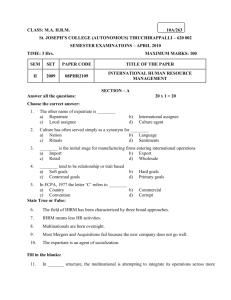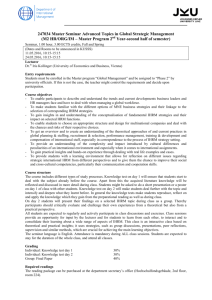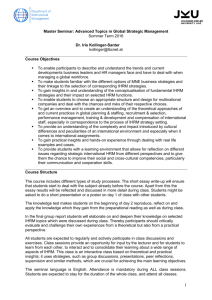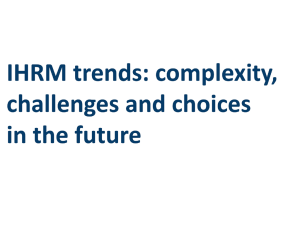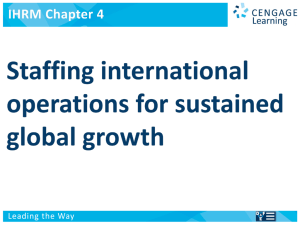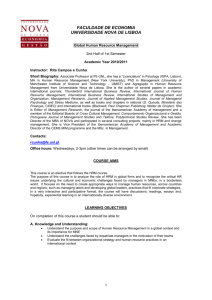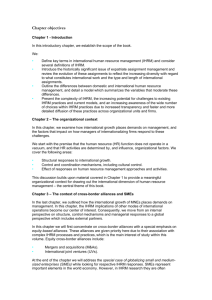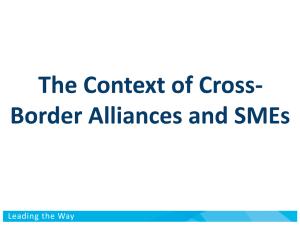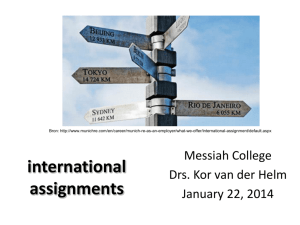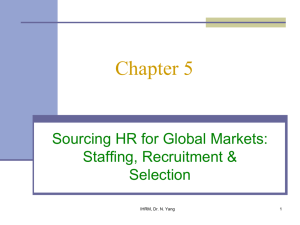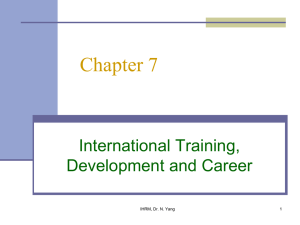Chapter4
advertisement
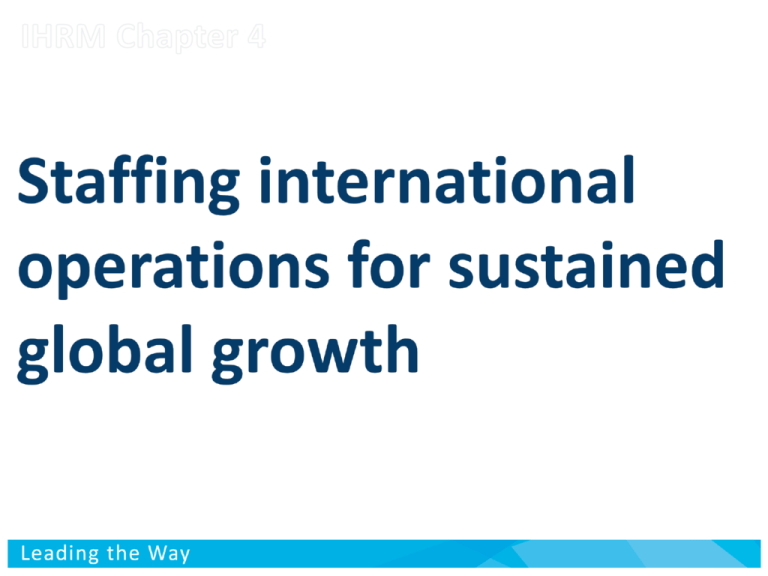
International Human Resource Management Managing people in a multinational context Chapter Objectives We focus on the ‘managing the people’ aspect of IHRM: • Issues relating to staffing foreign operations • The reasons for using international assignments: filling positions and developing managers and organizations. • Various types of international assignments: short term, extended and longer term; • Various non-standard arrangements: commuter, rotator, contractual and virtual • The role of expatriates and non-expatriates in supporting international business activities • Return on investment of international assignments • The role of the corporate HR function in MNEs IHRM Chapter 4 2 Table 4-1a The advantages and disadvantages of using PCNs IHRM Chapter 4 3 Table 4-1b The advantages and disadvantages of using TCNs IHRM Chapter 4 4 Table 4-1c The advantages and disadvantages of using HCNs IHRM Chapter 4 5 Staffing Choices Ethnocentric Management Where the home country management style is imposed on the host country. The assumption is that what works at home should also work overseas. This style of management is not well suited or applicable to the global world today. The management team has to diversify and adjust in being flexible to accommodate the host country’s culture and employees’ norms and social relation in the workplace. Polycentric Management The foreign market is too hard to understand so host-country managers are relatively free to manage their own way. Competition is focused on a market-by-market basis. This type of management style is used by such franchises as McDonald’s, Domino’s Pizza, Kentucky Fried Chicken, Pizza Hut, and Burger King. Regiocentric Management The style most parent organizations use when they feel that the regional insiders best coordinate operations within the region. The assumption is that the regional workers know their market better than others. Similarly, these employees can serve an entire region for economies of scale purposes instead of having many representatives in various countries. Geocentric Management A highly interdependent system that speaks in terms of the global village. The focus is at once both worldwide and on local objectives. Some franchises operate based on the geocentric management orientation. They focus on being a worldwide business first and then they regionalize in groups. IHRM Chapter 4 6 Figure 4-1 Determinants of staffing choices IHRM Chapter 4 7 Reasons for International Assignments 1. Position filling 2. Management development 3. Organization development IHRM Chapter 4 8 Types of international assignments • • • Short term up to 3 months Extended up to 1 year Long term (traditional expatriate assignment) 1 to 5 years Some non-standard assignments: • Commuter go home every one to two weeks • Rotational commute for set period followed by break in home country • Contractual specific skills employees hired for 6 to 12 months on specific projects • Virtual employee manages international responsibilities from home country base IHRM Chapter 4 9 Table 4-2 Differences between traditional and short-term assignments IHRM Chapter 4 10 Figure 4-2 The roles of an expatriate IHRM Chapter 4 11 Figure 4-3 ROI indicators for calculating international assignments IHRM Chapter 4 12 4-steps to calculate expatriate ROI 1. Identify financial and non-financial costs and benefits. 2. Link the costs and benefits to the purpose of the long-term assignment. 3. Identify the appropriate antecedents (prior events) from a system’s perspective. 4. Conduct the calculation at an appropriate time within the context of the assignment’s purpose. IHRM Chapter 4 13 Table 4-3 Various roles of corporate HR IHRM Chapter 4 14
